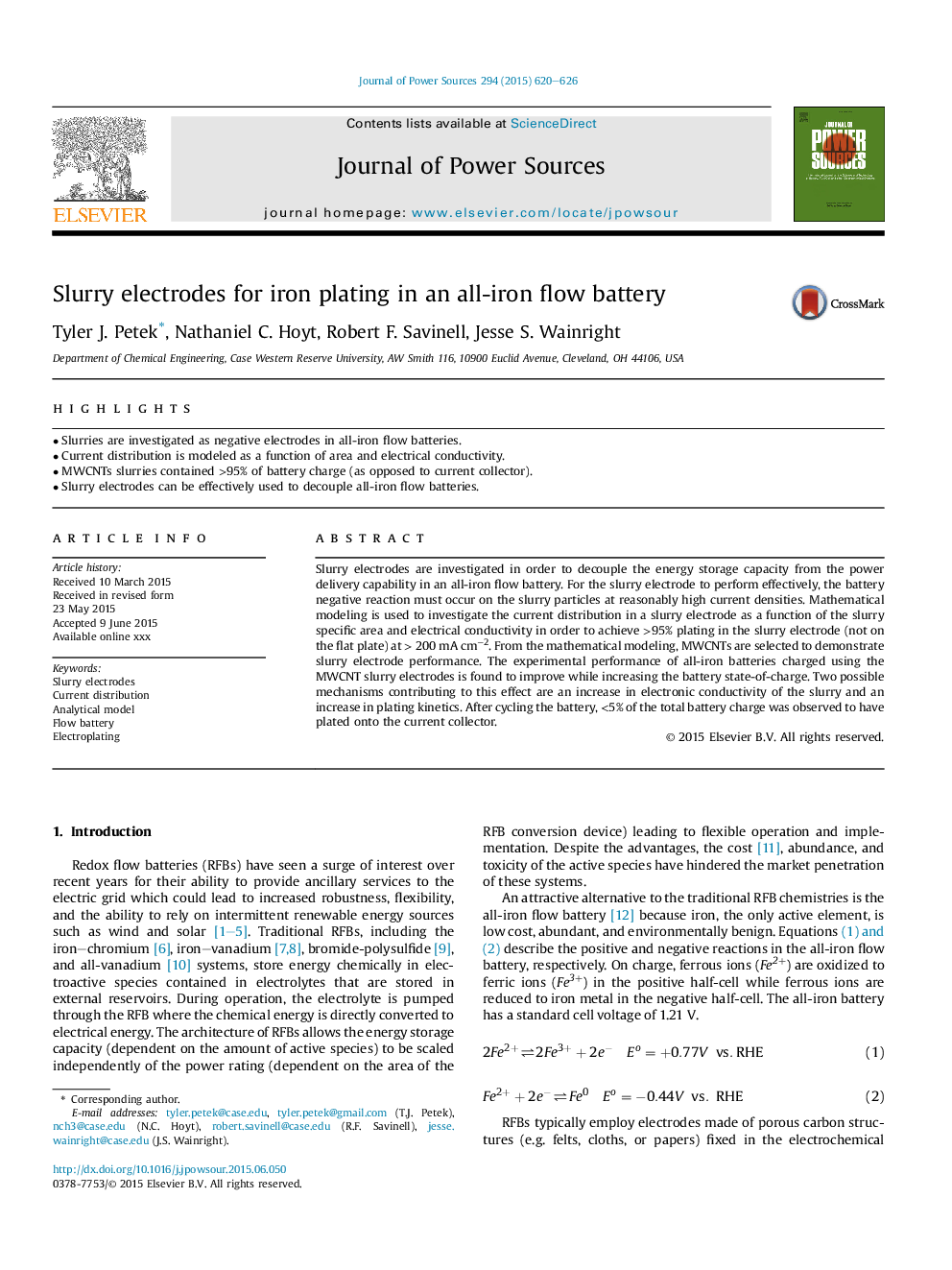| Article ID | Journal | Published Year | Pages | File Type |
|---|---|---|---|---|
| 7731537 | Journal of Power Sources | 2015 | 7 Pages |
Abstract
Slurry electrodes are investigated in order to decouple the energy storage capacity from the power delivery capability in an all-iron flow battery. For the slurry electrode to perform effectively, the battery negative reaction must occur on the slurry particles at reasonably high current densities. Mathematical modeling is used to investigate the current distribution in a slurry electrode as a function of the slurry specific area and electrical conductivity in order to achieve >95% plating in the slurry electrode (not on the flat plate) at > 200 mA cmâ2. From the mathematical modeling, MWCNTs are selected to demonstrate slurry electrode performance. The experimental performance of all-iron batteries charged using the MWCNT slurry electrodes is found to improve while increasing the battery state-of-charge. Two possible mechanisms contributing to this effect are an increase in electronic conductivity of the slurry and an increase in plating kinetics. After cycling the battery, <5% of the total battery charge was observed to have plated onto the current collector.
Related Topics
Physical Sciences and Engineering
Chemistry
Electrochemistry
Authors
Tyler J. Petek, Nathaniel C. Hoyt, Robert F. Savinell, Jesse S. Wainright,
